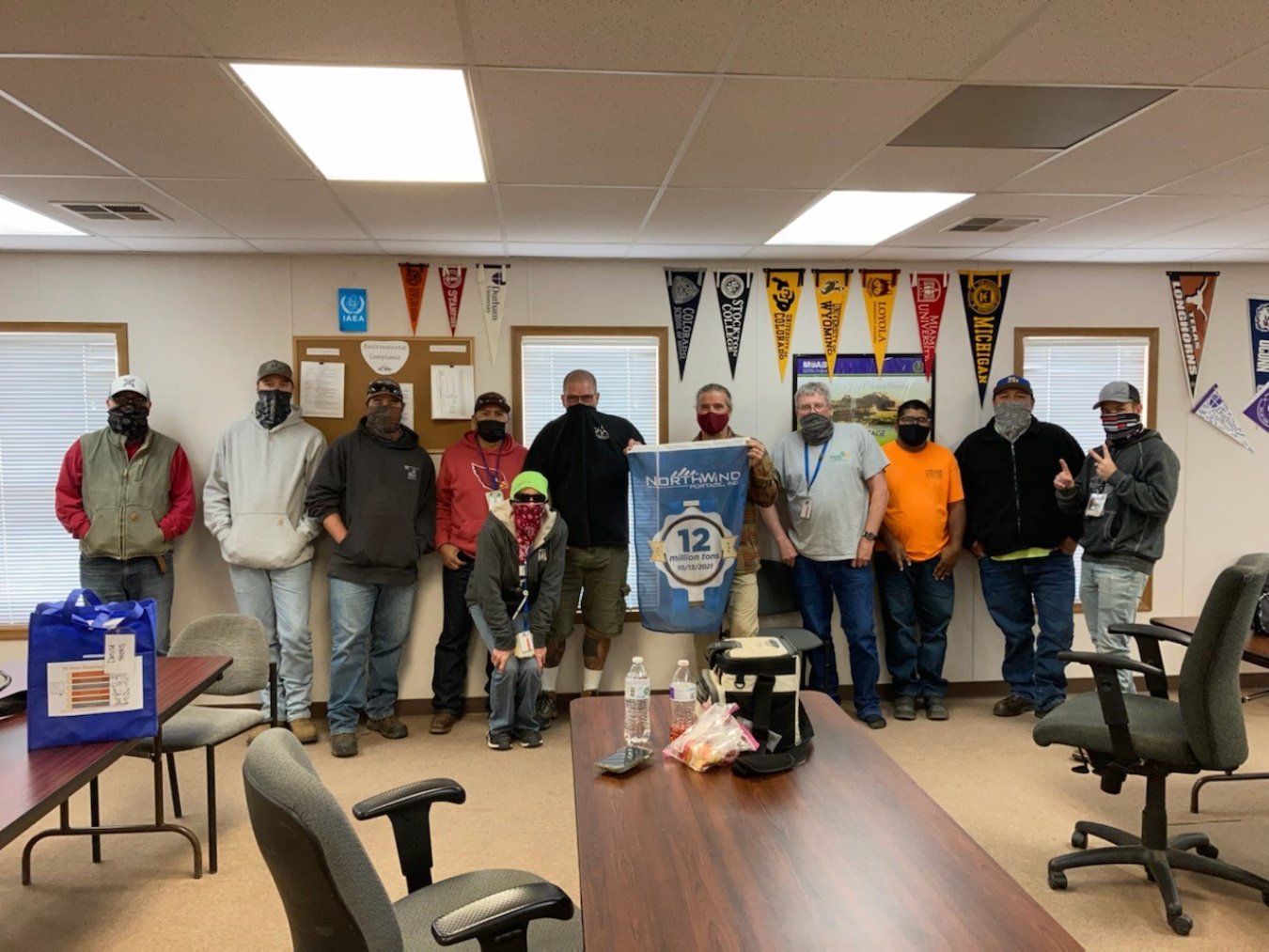MOAB, Utah – EM’s Moab Uranium Mill Tailings Remedial Action (UMTRA) Project recently accomplished an EM 2021 priority by successfully relocating another million tons of uranium mill tailings away from the Colorado River, bringing the cumulative total to 12 million tons permanently disposed.
“We’re excited to celebrate another milestone for the Moab UMTRA Project,” Moab Project Federal Cleanup Director Russell McCallister said. “The cleanup continues to move at an accelerated rate and we’re getting closer to completion every day, thanks to the dedication of our project staff, agency partners, and community members.”
The Moab Project, which began in 2009, is charged with moving an estimated 16 million tons of contaminated soil and debris to an engineered disposal cell in Crescent Junction, Utah, 30 miles north of the Moab Site. The material resulted from legacy uranium milling operations.

McCallister noted that the cleanup’s top priority is safety. The Moab Project has exceeded 1,800 workdays without a lost-time injury or illness.
“I’m proud that we’ve not only reached the 12 million tons milestone but that we’ve done it while adhering to the highest standards of safety for our workers and the community, especially considering the challenges of the COVID-19 pandemic,” McCallister said.
As the Moab Project nears completion, local, state, and federal stakeholders are planning for the site’s future after remediation is complete.
To prepare tailings for removal, workers excavate and condition them in drying beds to reach the optimal moisture content for disposal and to reduce shipping excess water. Excavators load tailings in steel containers with locking lids for transport.
When tailings arrive at the Crescent Junction Site, they are dumped from the containers, loaded into dump trucks, and driven to the disposal area where a bulldozer spreads them for compaction in layers. After placement has reached the design thickness, they are capped with a multi-layered cover composed of native soils and rock.
To receive the latest news and updates about the Office of Environmental Management, submit your e-mail address.
